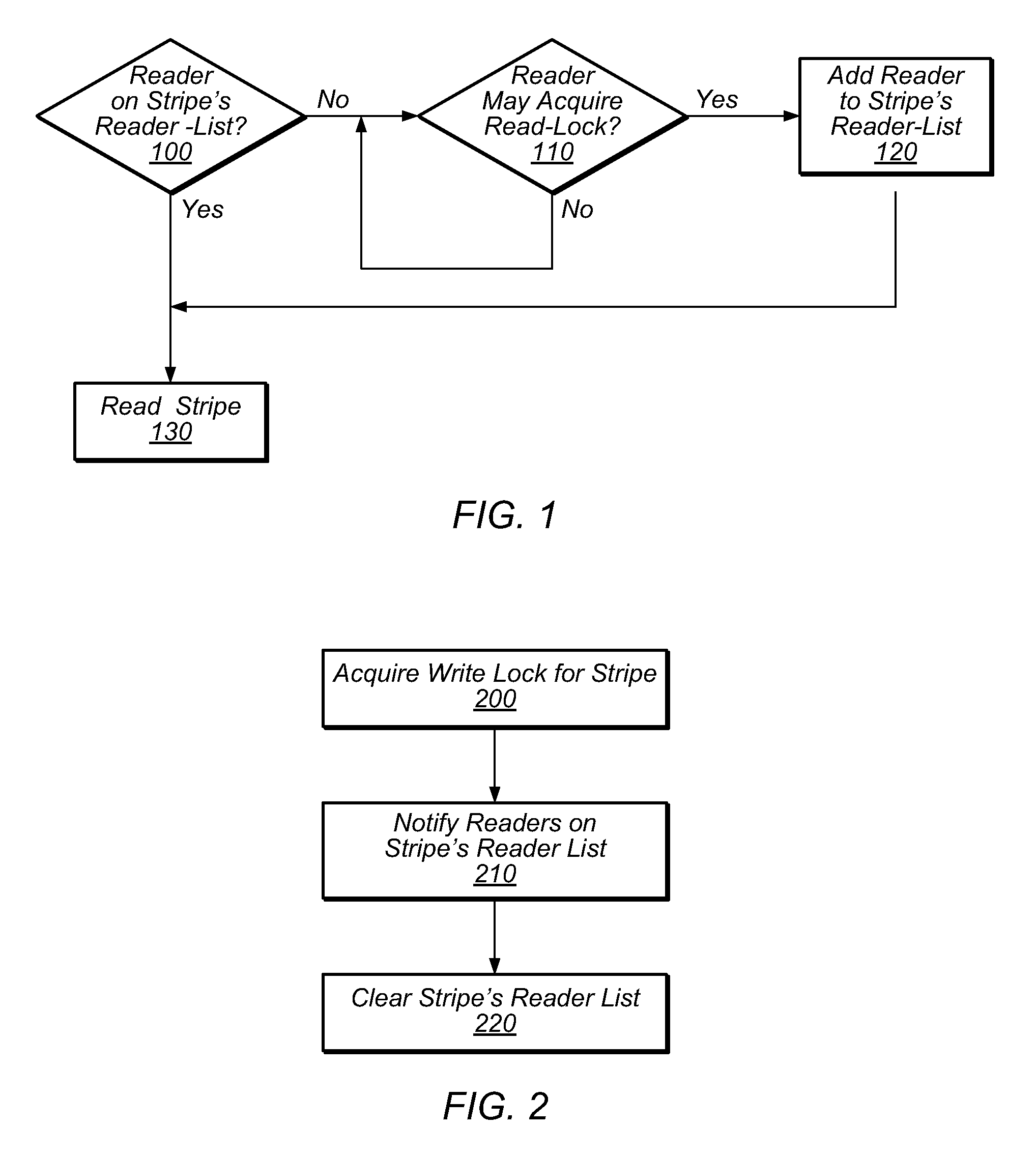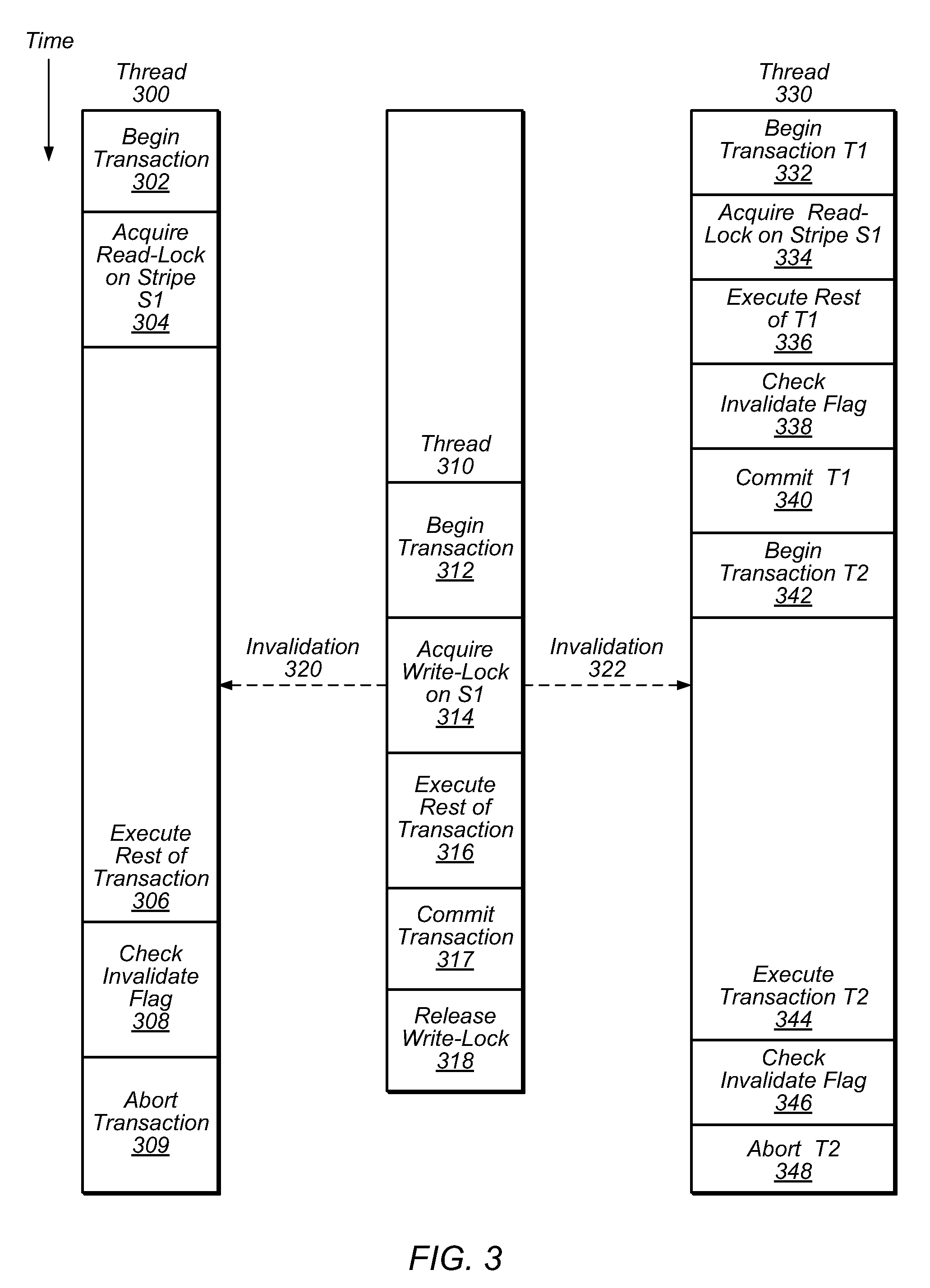System and Method for Transactional Locking Using Reader-Lists
a technology of transactional locking and reader-list, applied in the field of transactional memory computer systems, can solve the problems of other threads that observe memory values resulting from partial execution of critical sections, performance limitations, deadlock, etc., and achieve the effect of simplifying and/or optimizing the management of reader-lists
- Summary
- Abstract
- Description
- Claims
- Application Information
AI Technical Summary
Benefits of technology
Problems solved by technology
Method used
Image
Examples
Embodiment Construction
[0025]Transactional Locking techniques, such as TLRW, are software based, transactional memory techniques that may allow multiple threads to execute critical sections protected by the same lock concurrently, as transactions. While TLRW affords numerous benefits, the performance of a system employing TLRW may be hindered by excessive lock traffic. For example, in TLRW implementations, a read-write lock may be used to control access to a stripe. When executing in transactional mode, a thread must acquire any read-write locks associated with a stripe before reading that stripe. Before reading a stripe that is protected by a given read-write lock, a thread must increment a counter field in the lock that reflects the number of threads that have read the stripe transactionally but that have not yet committed. Such threads may be referred to as readers, and the value of the counter field may be referred to as the reader count. When a thread commits a transaction, the thread must decrement ...
PUM
 Login to View More
Login to View More Abstract
Description
Claims
Application Information
 Login to View More
Login to View More - R&D
- Intellectual Property
- Life Sciences
- Materials
- Tech Scout
- Unparalleled Data Quality
- Higher Quality Content
- 60% Fewer Hallucinations
Browse by: Latest US Patents, China's latest patents, Technical Efficacy Thesaurus, Application Domain, Technology Topic, Popular Technical Reports.
© 2025 PatSnap. All rights reserved.Legal|Privacy policy|Modern Slavery Act Transparency Statement|Sitemap|About US| Contact US: help@patsnap.com



